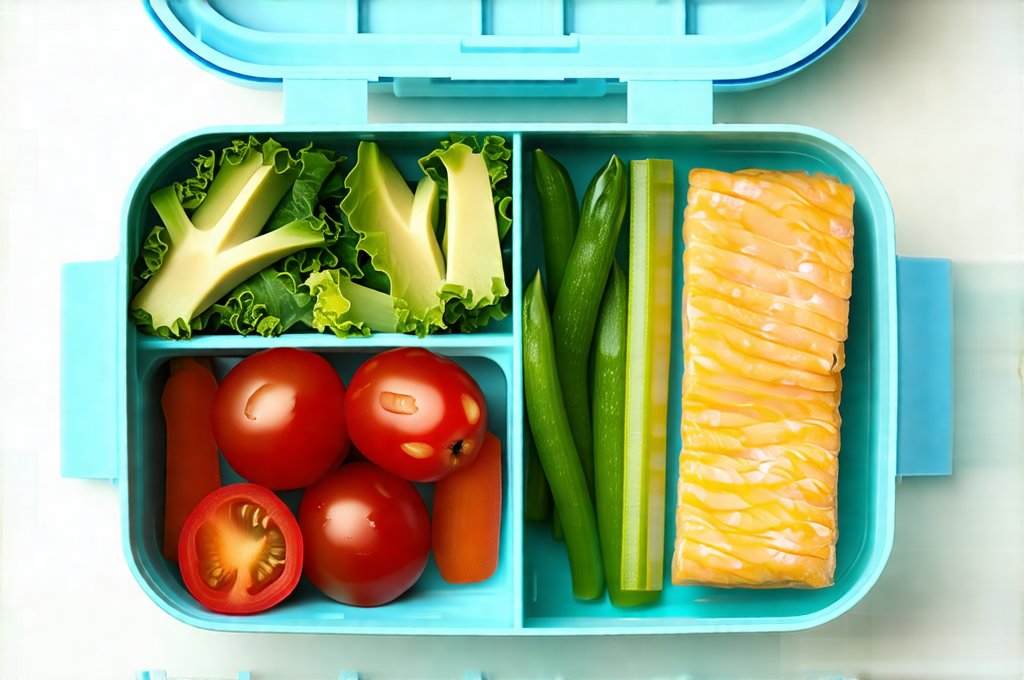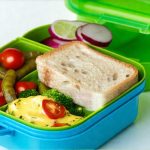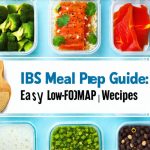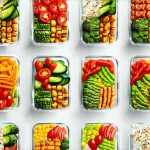The midday meal often feels like a logistical challenge, especially when packing for work or school. Beyond ensuring it tastes good, there’s a growing awareness of how our lunch choices impact more than just energy levels – they significantly influence gut health, and by extension, overall wellbeing. A happy gut is linked to better immunity, improved mood, and even enhanced cognitive function, making the contents of that lunchbox far more important than simply avoiding hunger pangs. But navigating the world of “gut-friendly” can feel overwhelming; it’s not about restrictive diets or complicated recipes, but rather thoughtful choices that nourish our microbiome – the trillions of bacteria living in our digestive system.
This guide aims to demystify gut-friendly lunchbox prep, offering practical strategies and delicious ideas for building a midday meal that supports both productivity and digestion. We’ll move beyond generic “healthy” options and focus on incorporating foods that actively promote a diverse and thriving gut microbiome. It’s about making small, sustainable changes to everyday routines, transforming lunchtime from a quick fuel-stop into an opportunity to nurture our bodies from the inside out. Think vibrant colors, textural variety, and mindful ingredient combinations – all hallmarks of a truly nourishing lunchbox. If you are struggling with recurring digestive issues it may be time to consider scan or lab tests to understand the underlying cause.
Building Blocks for a Gut-Friendly Lunchbox
The foundation of any good lunchbox starts with understanding the key components that support gut health. Fiber is arguably the most important element; it acts as “food” for beneficial bacteria in the colon, promoting their growth and activity. Different types of fiber feed different microbes, so diversity is crucial. Think beyond just bran flakes – fruits, vegetables, legumes, whole grains, nuts, and seeds all contribute unique fibers. Protein is also essential, but choose lean sources like chicken, fish, lentils, or tofu to avoid excessive digestive stress. Finally, healthy fats are vital for nutrient absorption and overall gut function; avocado, olive oil, nuts, and seeds offer excellent options.
Beyond the individual components, consider food pairings. Combining fiber-rich foods with protein and healthy fats slows down digestion, preventing blood sugar spikes and providing sustained energy. Avoid overly processed foods, sugary drinks, and artificial sweeteners, as these can disrupt the delicate balance of your gut microbiome. And crucially, hydration is key – water aids in digestion and supports a healthy mucosal lining in the gut. A reusable water bottle should be a permanent fixture in any lunchbox! If you are looking to change up your diet to support your gut health, consider transitioning slowly for best results.
Beyond Sandwiches: Creative Lunchbox Ideas
Let’s face it, sandwiches can get monotonous. Fortunately, there’s a vast world of gut-friendly options beyond sliced bread and fillings. Salads, grain bowls, wraps, and even leftovers from dinner can all be transformed into nourishing lunches. Consider a quinoa salad with roasted vegetables (broccoli, sweet potato, bell peppers) and chickpeas, dressed with olive oil and lemon juice. Or a lentil soup packed with fiber and plant-based protein, served with a side of whole-grain crackers. Wraps made with whole wheat or spinach tortillas can be filled with hummus, avocado, and grilled chicken or tofu.
Leftovers are often the easiest option – just ensure they’re stored properly and reheated safely if necessary. Roasted chicken with steamed green beans and brown rice is a classic example. Experiment with different herbs and spices to add flavor and further enhance gut health; ginger, turmeric, and cinnamon all possess anti-inflammatory properties that can benefit digestion. Don’t underestimate the power of presentation – colorful, visually appealing lunches are more enticing and enjoyable! Planning out your weekly meals ahead of time is a great way to build safe menus.
Snack Smart: Gut-Friendly Additions
A well-rounded lunchbox isn’t complete without healthy snacks to tide you over between meals. Avoid sugary granola bars or processed snack packs; instead, opt for options that support gut health. – Greek yogurt with a handful of berries provides protein and probiotics (beneficial bacteria). – A small portion of nuts and seeds offers healthy fats and fiber. – Sliced apple with almond butter is a satisfying combination of sweetness and crunch. – Carrot sticks or cucumber slices with hummus provide fiber and vitamins.
- Fermented foods, like kefir or kimchi (in small portions!), introduce beneficial bacteria directly into the gut. Be mindful of portion sizes for fermented foods, as they can sometimes cause digestive upset in sensitive individuals. Remember, snacking isn’t about eliminating hunger; it’s about maintaining consistent energy levels and providing a steady stream of nutrients throughout the day. If you have a child experiencing stomach issues, consider how to support them.
Prepping for Success: Time-Saving Strategies
One of the biggest barriers to packing gut-friendly lunches is time. But with a little planning and preparation, you can streamline the process and make healthy choices more accessible. Batch cooking on weekends is a game-changer; prepare large quantities of grains (quinoa, brown rice), roasted vegetables, and protein sources (chicken, lentils) that can be easily assembled into different lunch combinations throughout the week.
Chopping vegetables in advance also saves valuable time during busy mornings. Invest in reusable containers and portion out snacks into individual bags or jars for quick grab-and-go options. Consider a dedicated “lunchbox station” in your kitchen with all the necessary supplies readily available. Don’t be afraid to enlist help – involve family members in the prepping process, making it a collaborative effort. If you’ve recently recovered from illness, gut recovery is essential for restoring your digestive system.
Addressing Common Concerns & Dietary Restrictions
Gut health is highly individual; what works for one person may not work for another. If you have specific dietary restrictions or sensitivities (e.g., gluten intolerance, lactose intolerance), be sure to adjust your lunchbox choices accordingly. Read food labels carefully and choose products that are free from allergens or irritants. Individuals with IBS or other digestive disorders may need to experiment with different foods to identify their triggers; a registered dietitian can provide personalized guidance.
For those concerned about food safety, prioritize proper storage and temperature control. Use insulated lunchboxes with ice packs to keep perishable items cool. Wash all fruits and vegetables thoroughly before packing them. And remember, when in doubt, it’s always better to err on the side of caution. Ultimately, building a gut-friendly lunchbox is an ongoing process of learning and adapting – finding what works best for your body and lifestyle. If you experience frequent flare ups during work or school, dealing with them is important to maintain productivity. Creating a safe meal plan can also provide indigestion relief.


















